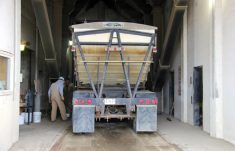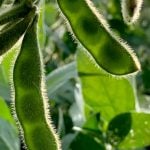CNS Canada — When the world needs canary seed, it calls on Saskatchewan, but whether the province will be able to answer this year remains a mystery.
Canary seed grown in Saskatchewan accounts for about 70 to 80 per cent of the international trade in the grain used mostly as bird feed, according to Kevin Hursh, executive director of the Canaryseed Development Commission of Saskatchewan.
However, dry conditions in major canary seed-growing regions of the province have cut into yield prospects.
New-crop bids were in the 23-25 cents/lb. range, while old-crop was topping out at 26.5 cents/lb.
Read Also

U.S. grains: Soybean futures set two-week high on US weather worry, soyoil rally
Chicago Board of Trade soybean futures touched a two-week high on Friday on worries that heat may threaten U.S. crops and expectations that the country’s biofuel policy would boost demand for soyoil, analysts said.
“Traditionally, a drought of this magnitude would be really pushing prices,” said Hursh. “But we’ve only seen them edge upwards, rather than zoom upwards.”
In recent years, canary seed usage has not lined up with the official supply numbers, with Canadian farmers selling more of the crop than is supposedly there.
The lack of reliable supply data was likely limiting the current strength in the canary seed market, Hursh said, “as nobody really knows how much is still in the bins.”
According to the most recent data from Agriculture and Agri-Food Canada’s market analysis division, Canada will export 170,000 tonnes of canary seed in 2014-15, but total supplies were only 125,000 tonnes.
That extra 45,000 tonnes obviously came from somewhere, but is not represented in the official numbers.
Canary seed tends to be a speculative crop, with farmers known to keep supplies in storage for years before selling. The question now is, how high will prices need to go in order to make those mystery supplies appear?
“Nobody really knows, but there hasn’t been a shortage yet. When buyers want product, they can find it,” said Hursh.
Canadian farmers seeded 330,000 acres of canary seed in 2015, up from 275,000 the previous year, according to Statistics Canada data.
The expanded acreage base may help offset the lower yield prospects to some extent, Hursh said.
— Phil Franz-Warkentin writes for Commodity News Service Canada, a Winnipeg company specializing in grain and commodity market reporting.
















